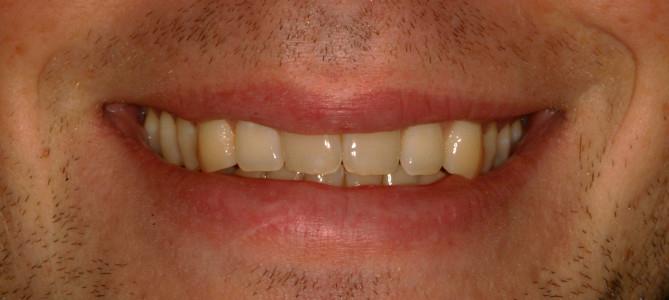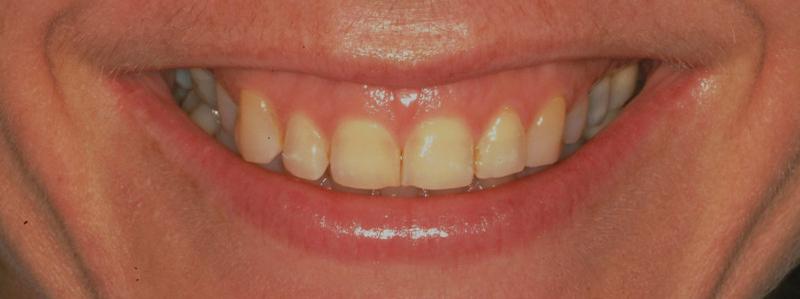-
0
Patient Assessment
- 0.1 Patient Demand
- 0.2 Anatomical location
-
0.3
Patient History
- 2.1 General patient history
- 2.2 Local history
-
0.4
Risk Assessment
- 3.1 Risk Assessment Overview
- 3.2 Age
- 3.3 Patient Compliance
- 3.4 Smoking
- 3.5 Drug Abuse
- 3.6 Recreational Drug and Alcohol Abuse
- 3.7 Condition of Natural Teeth
- 3.8 Parafunctions
- 3.9 Diabetes
- 3.10 Anticoagulants
- 3.11 Osteoporosis
- 3.12 Bisphosphonates
- 3.13 MRONJ
- 3.14 Steroids
- 3.15 Radiotherapy
- 3.16 Risk factors
-
1
Diagnostics
-
2
Treatment Options
-
2.1
Treatment planning
- 0.1 Non-implant based treatment options
- 0.2 Treatment planning conventional, model based, non-guided, semi-guided
- 0.3 Digital treatment planning
- 0.4 NobelClinician and digital workflow
- 0.5 Implant position considerations overview
- 0.6 Soft tissue condition and morphology
- 0.7 Site development, soft tissue management
- 0.8 Hard tissue and bone quality
- 0.9 Site development, hard tissue management
- 0.10 Time to function
- 0.11 Submerged vs non-submerged
- 0.12 Healed or fresh extraction socket
- 0.13 Screw-retained vs. cement-retained
- 0.14 Angulated Screw Channel system (ASC)
- 2.2 Treatment options esthetic zone
- 2.3 Treatment options posterior zone
- 2.4 Comprehensive treatment concepts
-
2.1
Treatment planning
-
3
Treatment Procedures
-
3.1
Treatment procedures general considerations
- 0.1 Anesthesia
- 0.2 peri-operative care
- 0.3 Flap- or flapless
- 0.4 Non-guided protocol
- 0.5 Semi-guided protocol
- 0.6 Guided protocol overview
- 0.7 Guided protocol NobelGuide
- 0.8 Parallel implant placement considerations
- 0.9 Tapered implant placement considerations
- 0.10 3D implant position
- 0.11 Implant insertion torque
- 0.12 Intra-operative complications
- 0.13 Impression procedures, digital impressions, intraoral scanning
- 3.2 Treatment procedures esthetic zone surgical
- 3.3 Treatment procedures esthetic zone prosthetic
- 3.4 Treatment procedures posterior zone surgical
- 3.5 Treatment procedures posterior zone prosthetic
-
3.1
Treatment procedures general considerations
-
4
Aftercare
Lip line, smile line
Key points
- Lip line and smile line are important diagnostics factors when treating patients with dental implants in the aesthetic region; in posterior regions the level of lip line and smile line are of less influence.
- High lip line and high smile line with gingival exposure pose technical aesthetic challenges when managing anterior teeth restorations.
Lip line and smile line
Lip line can be defined as the vertical position of the lower border of the upper lip. It is important to evaluate the lip line when smiling (smile line). The maximum upper lip elevation, during a strained smile, should also be assessed. As the smile expands, the teeth are exposed. The lip line is typically categorized in high smile, average smile and low smile.
Loss of teeth not only affects oral function, but also aesthetic appearance. From the patients perspective, there is usually a strong wish to restore function and aesthetics quickly, durable and in resemblance with the adjacent dentition. In the anterior aesthetic region it is challenging to achieve a satisfactory harmonious result if one tooth has to be replaced by an implant-supported restoration, especially if a substantial resorption of bone has taken place.
In all patients, state of art treatment, with striving for the best aesthetic result, is the standard. However, in patients with a high smile line the smallest deviation will be directly visible and will not be hidden by the upper lip. This factor is one of the most important parts in the process of implant counseling and information to the patient.

Figure 1: Upper Lip line (E) and other relevant landmarks

Figure 2: Patient with an average smile line

Figure 3: Patient with a high smile line
